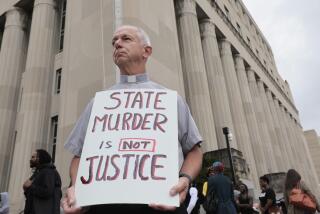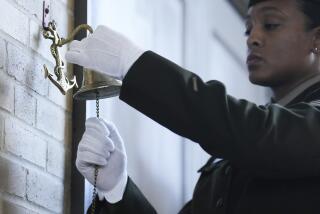Wrongful Convictions Detailed in Report
- Share via
CHICAGO — A report released Thursday detailed a history of mistakes and “tunnel vision” that led to the wrongful convictions of four men -- two of whom went to death row -- for a 1978 double homicide.
But the 400-page report, begun four years ago for the Cook County state’s attorney’s office, found no criminal wrongdoing. Federal authorities also announced Thursday they will not charge any law enforcement officials with violating the men’s civil rights.
The wrongfully convicted men became known as the “Ford Heights Four.” Advocates who worked to free them in 1996 criticized the report for not suggesting how to fix the system. They also said the county’s decision to settle a civil lawsuit with the men for $36 million in 1999 showed officials were concerned a jury would find flaws with the cases.
“It’s hard to walk away from all of this without thinking there was some significant misconduct involved,” said Edwin Colfax, at Northwestern University’s Center on Wrongful Convictions.
The case was one of many that attracted national attention to Illinois’ problems with the death penalty.
In 2000, then-Gov. George Ryan halted executions after courts found 13 men on death row had been wrongly convicted since the state resumed capital punishment in 1977. Before leaving office in January, he emptied death row -- pardoning four men and commuting the death sentences of 167 others to life in prison.
A new Illinois law mandates that police tape interrogations and confessions in murder cases. The “Ford Heights Four” -- Dennis Williams, Verneal Jimerson, Kenneth Adams and Willie Raines -- were in their 20s when they were convicted of the gang rape and murder of a suburban couple, Carol Schmal and Lawrence Lionberg.
Williams died in March; the others could not be reached for comment Thursday.
The report, put together by Gino DiVito, a former Illinois appellate court justice, blamed a number of factors for the wrongful convictions: Contradictory testimony of one purported eyewitness, weak corroboration of another witness, the shaky word of a jailhouse snitch and questionable scientific evidence.
More to Read
Sign up for Essential California
The most important California stories and recommendations in your inbox every morning.
You may occasionally receive promotional content from the Los Angeles Times.













